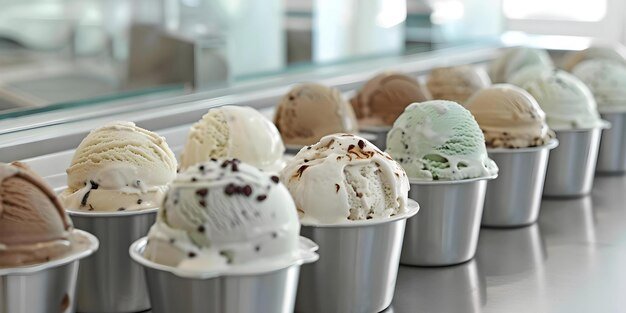Remember when ice cream flavors were simple? Vanilla, chocolate, strawberry. Those days are long gone. Now you’re walking into shops where lavender honey competes with brown butter sage, and goat cheese with fig swirl sits next to miso caramel. Welcome to the artisan ice cream revolution.
The Chemistry Behind Your Favorite Scoop
Creating artisan ice cream isn’t just about mixing ingredients and hoping for the best. You’re witnessing food science in action every time a craftsperson balances fat content with sugar ratios, or incorporates alcohol without creating an icy mess. The magic happens when cream meets chemistry.
Temperature control becomes everything. Too fast, and ice crystals form. Too slow, and you lose that silky texture you crave. You’ll find that the artisan ice cream flavors from Clementine’s come from makers who understand that butterfat percentage affects mouthfeel, while sugar content influences both sweetness and freezing point. They’re essentially edible engineers, crafting frozen symphonies one batch at a time.
Why Artisan Flavors Are Taking Over Your Freezer
You’ve probably noticed the shift. Local ice cream shops are popping up everywhere, each promising something you can’t find at the grocery store. There’s a reason for this explosion, and it goes deeper than just wanting something different.
Your palate has evolved. Years of exposure to global cuisines through food shows, travel, and social media have made you more adventurous. You want experiences, not just dessert. When you try black sesame or ube ice cream, you’re not just eating – you’re exploring.
- Instagram-worthy aesthetics drive discovery
- Local sourcing creates community connections
- Premium ingredients justify higher prices
- Unique flavors become conversation starters
The pandemic also played a role. As you spent more time at home, comfort foods became premium experiences. Why settle for basic when you could have brown butter pecan praline made by someone who sources pecans from a specific Georgia farm?
The Art of Flavor Innovation
Creating new flavors requires more than throwing random ingredients together. Artisan makers approach it like perfumers approach fragrance. They consider top notes, middle notes, and base flavors.
Take a successful flavor like salted caramel. It works because salt enhances sweetness while providing contrast. The caramel brings richness and complexity. Together, they create balance. Now imagine applying that same principle to unexpected combinations like olive oil with lemon zest, or Earl Grey with cornflower petals.
You’re seeing flavors inspired by everything from childhood memories to high-end cocktails. Some makers collaborate with local restaurants, turning signature dishes into frozen form. Others draw from cultural heritage, introducing flavors that tell stories of immigration and tradition.
What’s Coming Next in Your Bowl
The future of artisan ice cream looks wild and wonderful. You’ll probably see more plant-based options that actually taste indulgent, not like compromises. Expect flavors inspired by global street foods, fermented ingredients, and even savory applications.
Technology is changing the game, too. Liquid nitrogen allows for instant freezing and dramatic presentation. Some makers are experimenting with texture layers – imagine ice cream that changes consistency as you eat it.
Sustainability will drive innovation. You might find flavors featuring rescued produce or ingredients chosen specifically for their environmental impact. Zero-waste shops could become the norm, where even your container gets reused.
The most exciting development? Hyper-local flavors that capture your specific region’s identity. Think honey from rooftop beehives, herbs from urban farms, or fruit from heritage orchards right in your backyard.
Your neighborhood ice cream shop isn’t just serving frozen treats anymore. They’re creating edible art, one scoop at a time.





